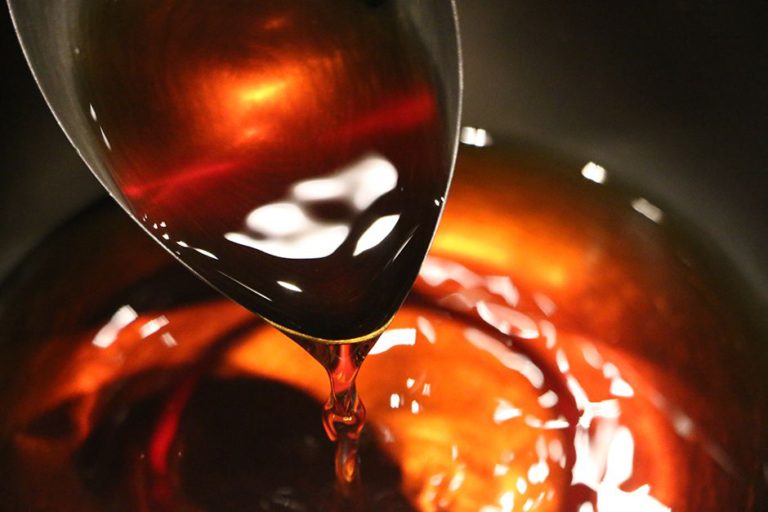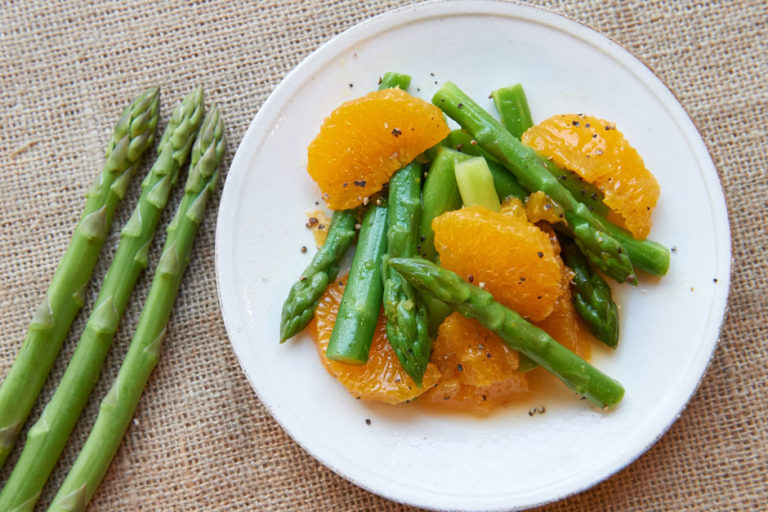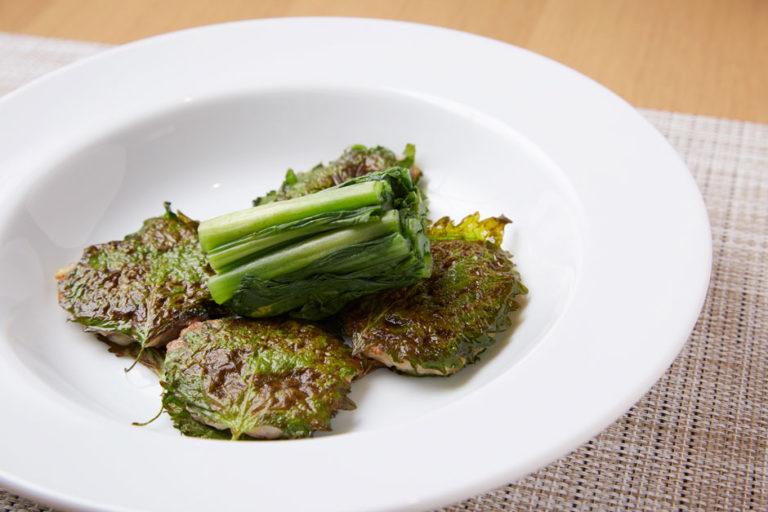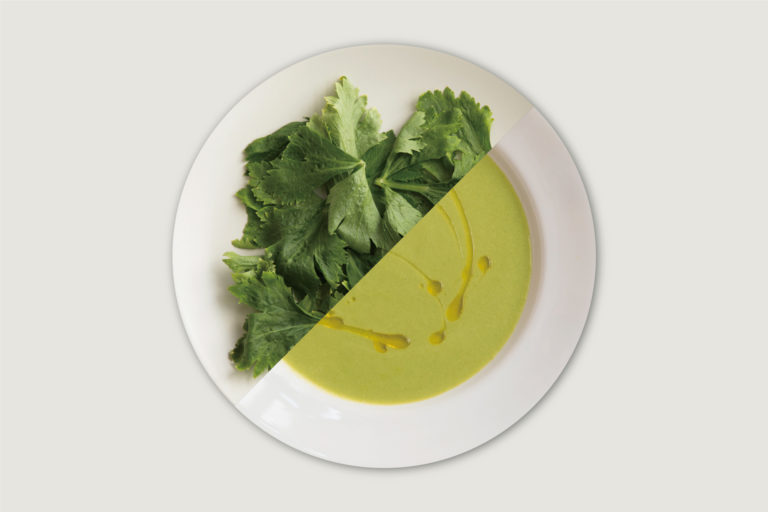The Ultimate Mentsuyu
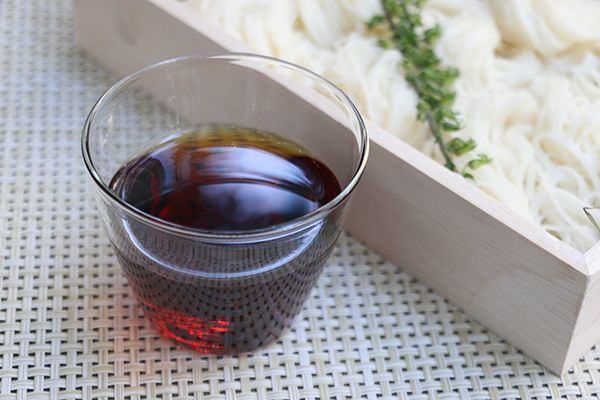
At times like these, Japanese people turn to cold noodles (e.g. soba, udon, hiyamugi, and somen) for an easy, filling meal.
Simply boil the noodles and pour some mentsuyu (a soup broth or dipping sauce for noodles) into a sobachoko (soba bowl) and you’ve got yourself a meal.
The SHUN GATE Editorial Department recommends that you insist on the best when it comes to mentsuyu.
The history of mentsuyu stretches as far back as the Muromachi period (approx. 1336?1573), when udon was already part of the Japanese diet.
According to Nisshinsha Yukyoshi, who wrote the book Soba Zensho during the Edo period (1603?1868), he tended not to use katsuobushi (dried bonito flakes) in mentsuyu because he preferred it without animal protein, suggesting that even back then, people enjoyed making mentsuyu to suit their own personal tastes.
As Japanese food culture has evolved over the years, so too has mentsuyu.
This refinement of mentsuyu has been underpinned by the creativity and dedication to perfection of Japan’s connoisseurs of years gone by.
In this article, the SHUN GATE Editorial Department would like to share with you the recipe for the ultimate mentsuyu, created by using top-quality ingredients from all over Japan.
Ingredients for the Ultimate Mentsuyu
To make the ultimate mentsuyu, you will need the five ingredients listed below.
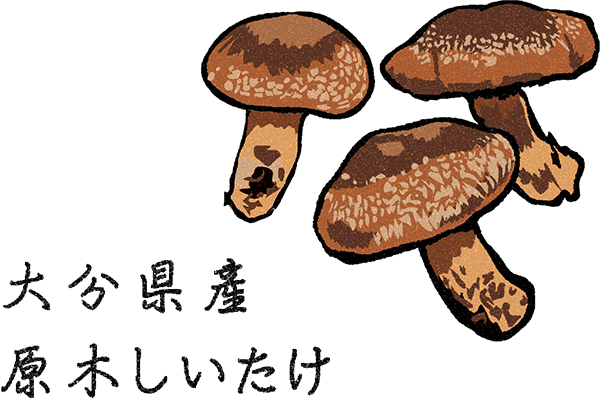
Dried log-grown shiitake mushrooms from Oita Prefecture
The first ingredient we have selected for the ultimate mentsuyu is dried log-grown shiitake mushrooms from Oita Prefecture. Oita Prefecture boasts the highest production of dried shiitake mushrooms in all Japan. Its varied geographical features, which range from beautiful beaches to majestic mountains (highest peak at 1,791 m), ensure that it is blessed with the perfect amount of humidity for growing mushrooms.
The mountainous areas of Oita, said to be the birthplace of shiitake cultivation, are a treasure trove of all different kinds of mushrooms.
While many other mushroom growers now use cultivation beds that enable a large harvest to be produced in a short period of time, the Oita Shiitake Agricultural Cooperative has stuck by the traditional log-based cultivation of shiitake mushrooms.
The log-based cultivation method involves logging broad-leaf trees (such as the sawtooth oak), bringing them down from the mountains and then inoculating them with shiitake spores. After these spores have been allowed to grow under natural conditions for 18 months, the logs are moved to a cedar forest where the spores will grow into shiitake mushrooms. This requires a great deal of work, and it is very dependent on the weather. Growing shiitake mushrooms on logs takes three times longer than growing them in cultivation beds does.
In spite of these challenges, shiitake farmers in Oita remain faithful to the traditional cultivation method because it ensures that the mushrooms absorb nutrients only from the tree, leaving them free of agricultural chemicals and fertilizers, and provides sufficient time for them to grow thick, fleshy caps with cracks on their surface.
These log-grown shiitake mushrooms are the core ingredient for the ultimate mentsuyu.
For inquiries, contact:
OSK Co., Ltd.
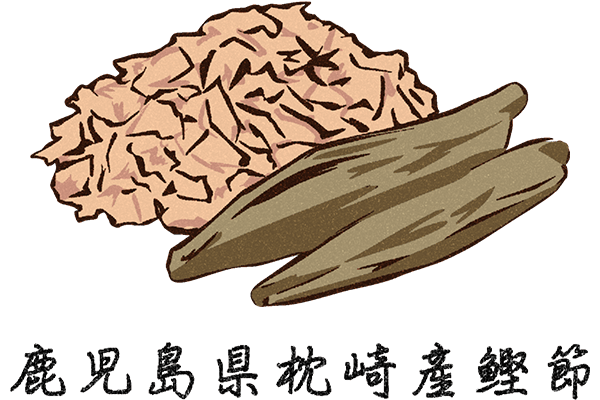
■ Katsuobushi from Makurazaki, Kagoshima Prefecture
The second ingredient for the ultimate mentsuyu is katsuobushi (dried bonito flakes) produced in Makurazaki.
A small port town with a population of 25,000 located in the southern part of Kagoshima Prefecture, Makurazaki has long been famous for its katsuobushi.
Its quality is so high that first-class Japanese restaurants avoid using katsuobushi from anywhere else, and the best of the best is Honkarebushi.
Honkarebushi is made through a seemingly unending process of repeatedly molding and sun-drying bonitos to carefully removing moisture and oil from them over a period of more than 6 months. Professional chefs find this a priceless ingredient.
For inquiries, contact:
Kaneshichi Shoten
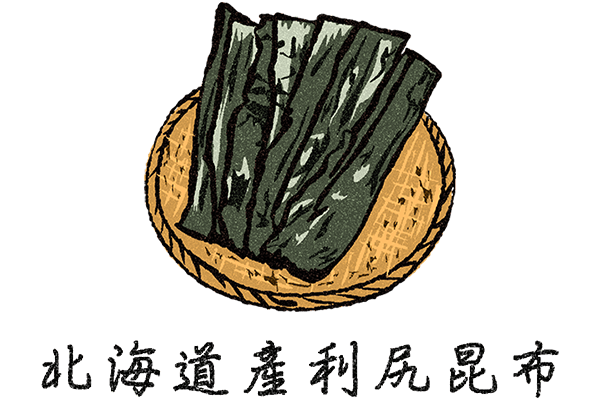
■ Rishiri konbu from northern Hokkaido
Given the many varieties of konbu (kelp) that are produced throughout Japan?
each with its own uniquely delicious flavor?selecting the right one for the ultimate mentsuyu was a difficult task.
We selected Rishiri konbu because it goes perfectly with shiitake mushrooms to bring out even more great flavor.
Rishiri konbu is harvested from various beaches on islands off the northern tip of Hokkaido, including Kutsugata beach on Rishiri Island along with Kafuka beach and Funadomari beach on Rebun Island. The tidal currents, water temperature, amount of sunshine, river waterways, the mountains at their back, the wide-open spaces that can be used for drying konbu . . . the conditions found at these beaches combine to make the perfect environment for growing konbu.
The delicate, salty flavor of Rishiri konbu makes it an ideal ingredient for producing a clear mentsuyu that has a great aroma and is packed full of flavor. Japanese restaurants in Kyoto value Rishiri konbu greatly, using it for owanmono (a Japanese soup dish), senmaizuke (a traditional pickle from Kyoto) and yudofu (boiled tofu).
For inquiries, contact:
Suita Shoten (konbu wholesaler)
http://www.tsukiji.or.jp/search/shoplist/cat-e/cat-18/201.html
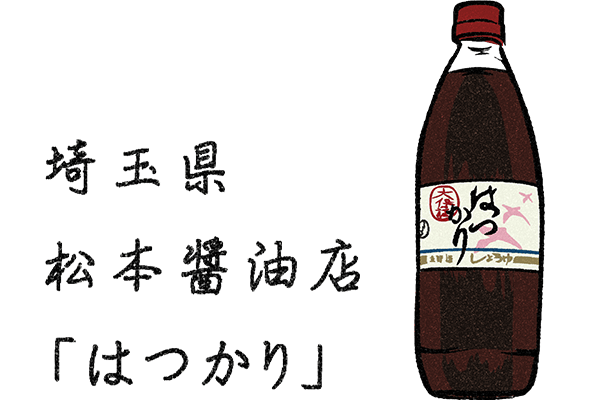
■ Hatsukari by Matsumoto Shoyuten
Hatsukari, a soy sauce produced by a company based in Kawagoe, Saitama Prefecture called Matsumoto Shoyuten, is used as the seasoning base for the ultimate mentsuyu.
Moromi, the main fermenting mash for the production of soy sauce, has been repeatedly fermented at the Matsumoto Shoyuten brewery, which was built in 1830 in Kawagoe, Saitama. The kurakobo (yeast) used in Hatsukari is also stored here. The combination of this moromi and kurakobo results in a highly aromatic soy sauce with a naturally sweet flavor. The master artisans at this brewery diligently adhere to the traditional ways of making soy sauce.
Hatsukari is a favorite of Japanese cuisine chefs and connoisseurs.
With a rich history stretching all the back to Japan’s Edo period, Hatsukari adds depth to the taste of the ultimate mentsuyu.
For inquiries, contact:
Matsumoto Shoyuten (soy sauce brewery)
■ Isshisoden by Ogasawara Mirin
Isshisoden mirin, produced by Ogasawara Mirin, adds a mellow flavor and refreshing sweetness to mentsuyu.
Ogasawara Mirin is located in Hekinan City, Aichi Prefecture, an area well-known for its long history (over 200 years in fact) of producing Mikawa Mirin. Taking full advantage of its small production system, this long-established company works ever so carefully to produce genuine, hand-made mirin. Certain rules need to be followed to produce good-quality mirin.
1. Use only domestically produced rice; 2. Use hand-made rice malt; 3. Let the sediment settle naturally; and 4. Do no use any form of heat treatment.
Manufacturers that follow the above rules are able to produce a mellow, sweet mirin that, being good enough to drink on its own, is able to bring out the best in the food it is used with. Unlike mirin made using artificial sweeteners, which produce a heavy sugary taste, Isshisoden has a light, mellow sweetness that bathes the tongue, delivering a taste that is only possible when rice malt has been used in the fermentation process.
For inquiries, contact:
Ogasawara Mirin (mirin manufacturer)
Dried log-grown shiitake mushrooms from Oita: The key to the ultimate mentsuyu
The key ingredient to the flavor of the ultimate mentsuyu is the unique taste of dried log-grown shiitake mushrooms from Oita Prefecture.
The delightful aroma of these mushrooms is said to result from a combination of the log-based cultivation method (called rachibuse) and drying method used in Oita.
Rachibuse is a method in which logs are piled up into the shape of a shrine gate on the level ground created by the cutting down of trees. This creates an environment where the temperature difference between areas in the sun and shade, the flow of air, and the amount of rainfall are ideally suited to the growth of shiitake spores. The drying method that is used allows the drying temperature and wind flow to be adjusted according to the water content that each shiitake mushroom has before the drying process begins. This helps to ensure that the shiitake mushrooms produced have shiny brown caps, shiny golden gills on their undersides, and a rich, full-bodied aroma and flavor.
To uncover the secrets behind the great flavor of dried log-grown shiitake mushrooms, SHUN GATE plans to pay a visit to shiitake farms in Oita Prefecture in the near future.
You won’t want to miss our coverage of this trip!

